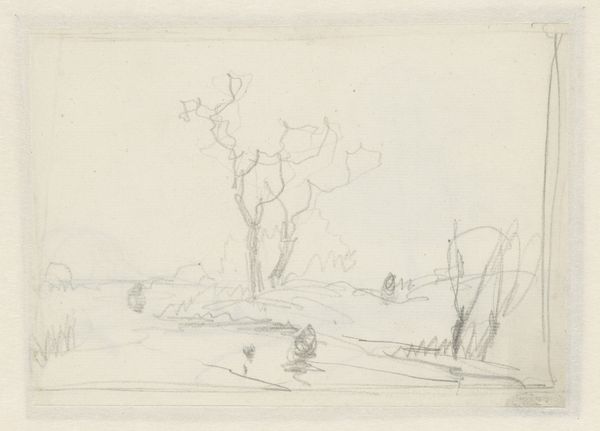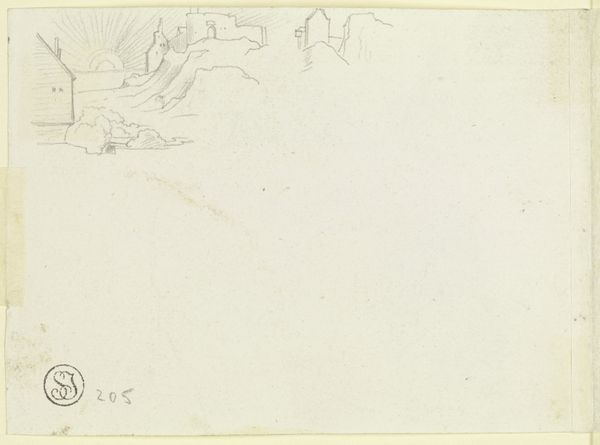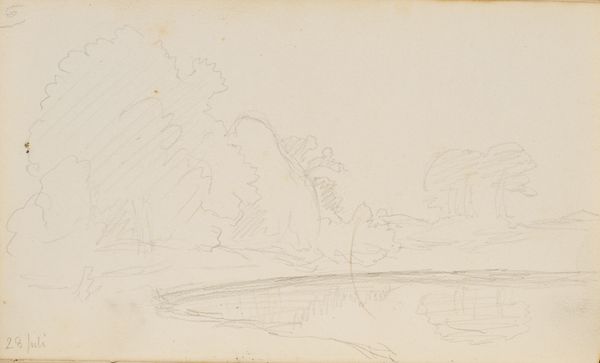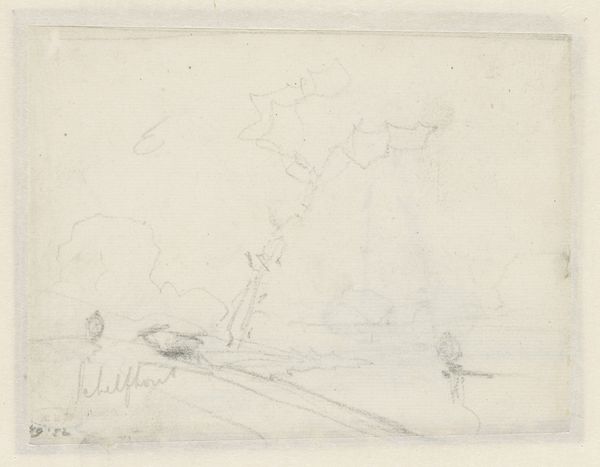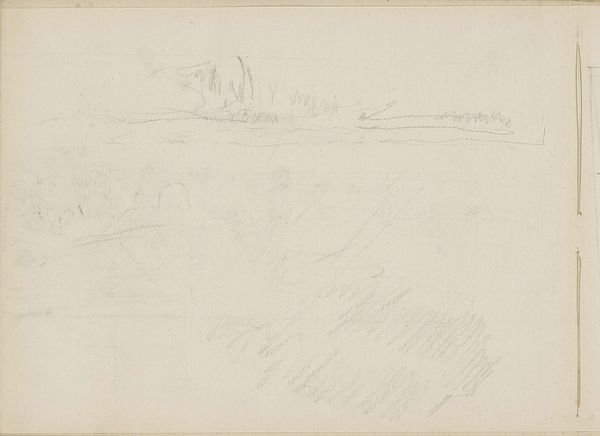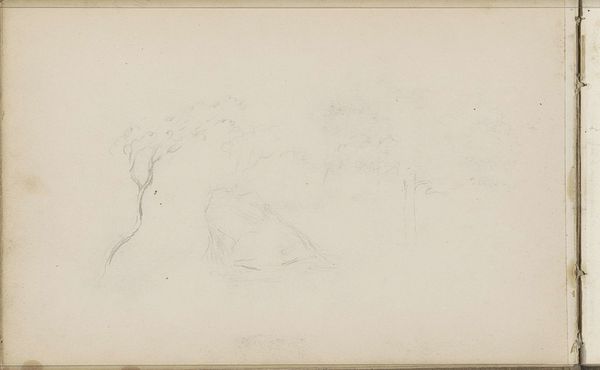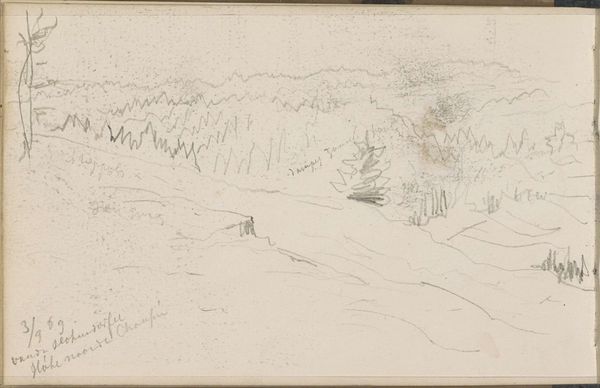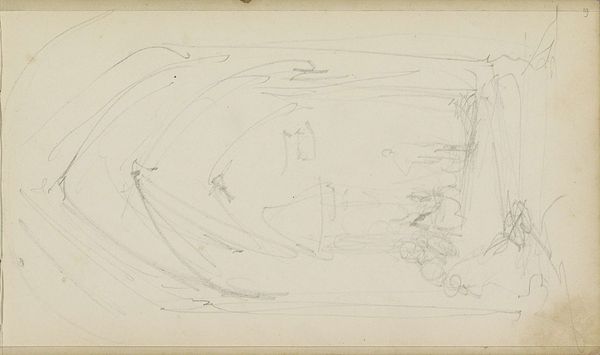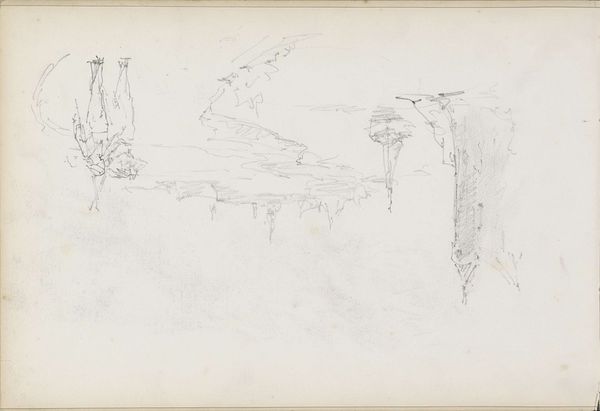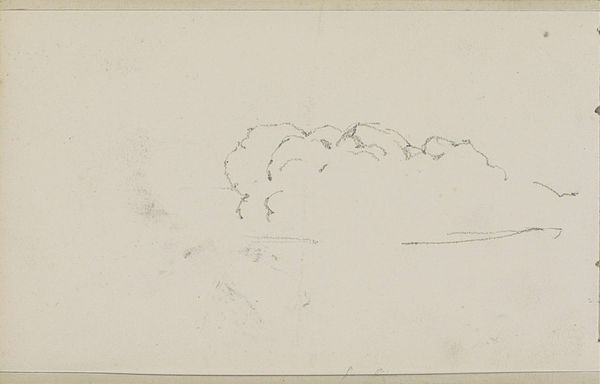
Copyright: Rijks Museum: Open Domain
Editor: This is "Landschap met bomen," or "Landscape with Trees," a pencil drawing by Jozef Israëls. The date is listed as between 1834 and 1911. It has this fragile, almost dreamlike quality. What do you see in this piece? Curator: Beyond its aesthetic qualities, I see a dialogue about representation itself. The loose, suggestive lines—barely-there trees—speak to the inherent limitations and subjectivity of landscape art. Consider Israëls' historical context; he was working during a time of significant social and political upheaval, with increasing urbanization that marginalized rural populations. Editor: So, the incomplete quality isn't a failing but a statement? Curator: Precisely. The drawing resists the romanticized, idyllic depictions of rural life often found in landscape art. Instead, it hints at a kind of absence, a loss. What might this suggest about the social role of landscape art in that period? It's not a pristine nature scene; it feels like a memory. The artist almost questions the point of creating such artwork, maybe asking if romanticizing landscape isn’t more of a detriment than a gift. How does the medium itself—a quick pencil sketch—contribute to this feeling? Editor: I see what you mean! Because it's a sketch, it feels like a fleeting impression. Curator: Exactly. It challenges the grand narratives of the Romantic era. Also, this emphasis on fragility and ephemerality can be linked to larger discussions on nature, capitalism, and environmental issues which were prominent already during that period. In Israëls lifetime photography also grew which meant painting could take other paths to make an impact. Editor: It makes me think about how even seemingly simple landscapes carry so much cultural weight. Thanks for sharing this. Curator: My pleasure. And keep in mind that these traces always invites reflection on power and meaning and our role as observers.
Comments
No comments
Be the first to comment and join the conversation on the ultimate creative platform.
